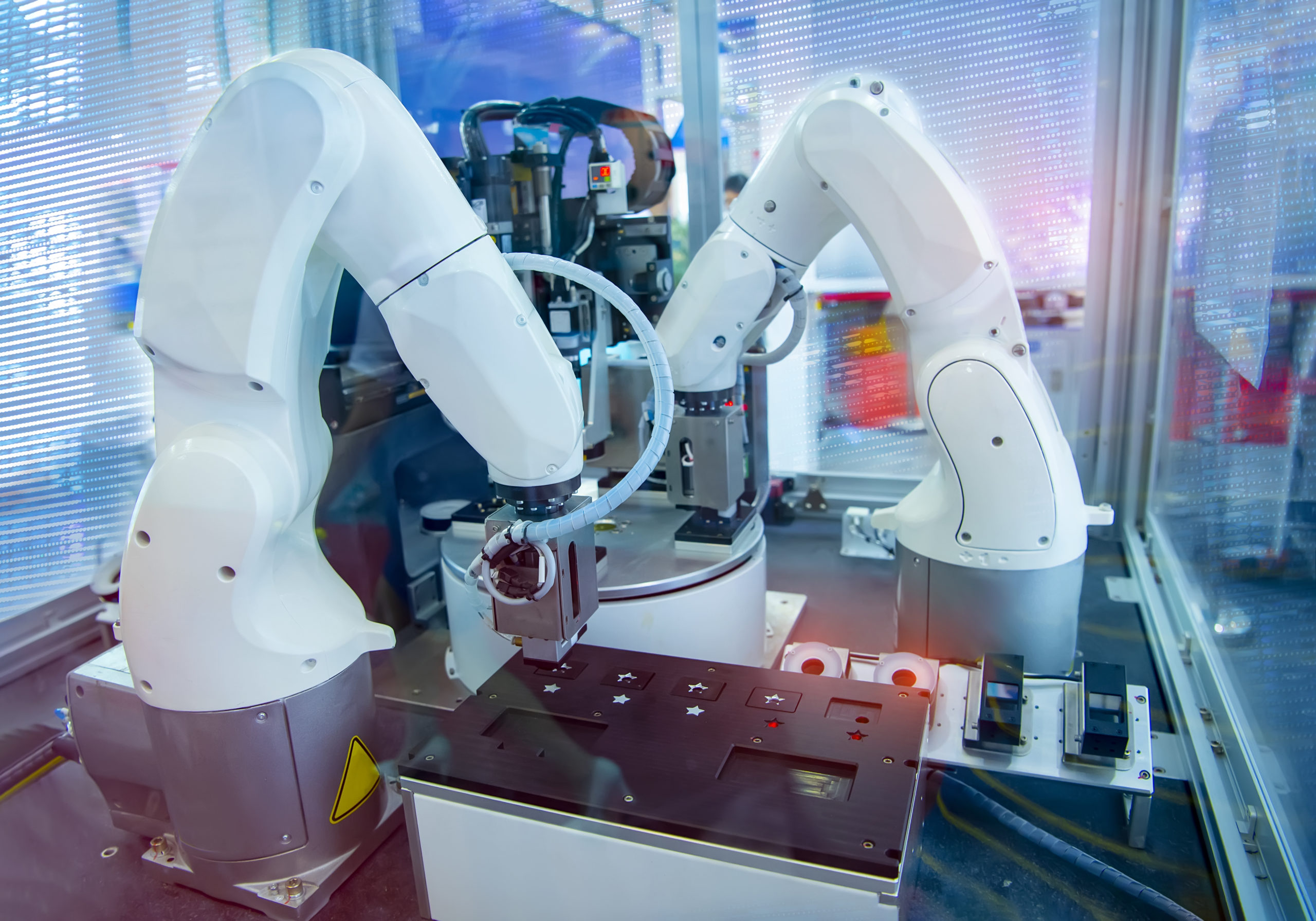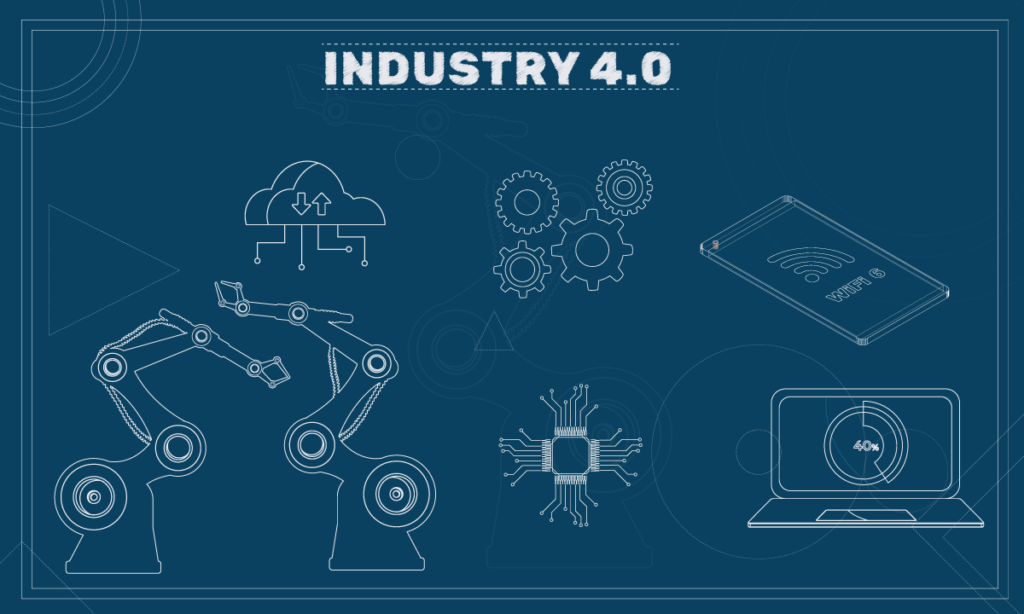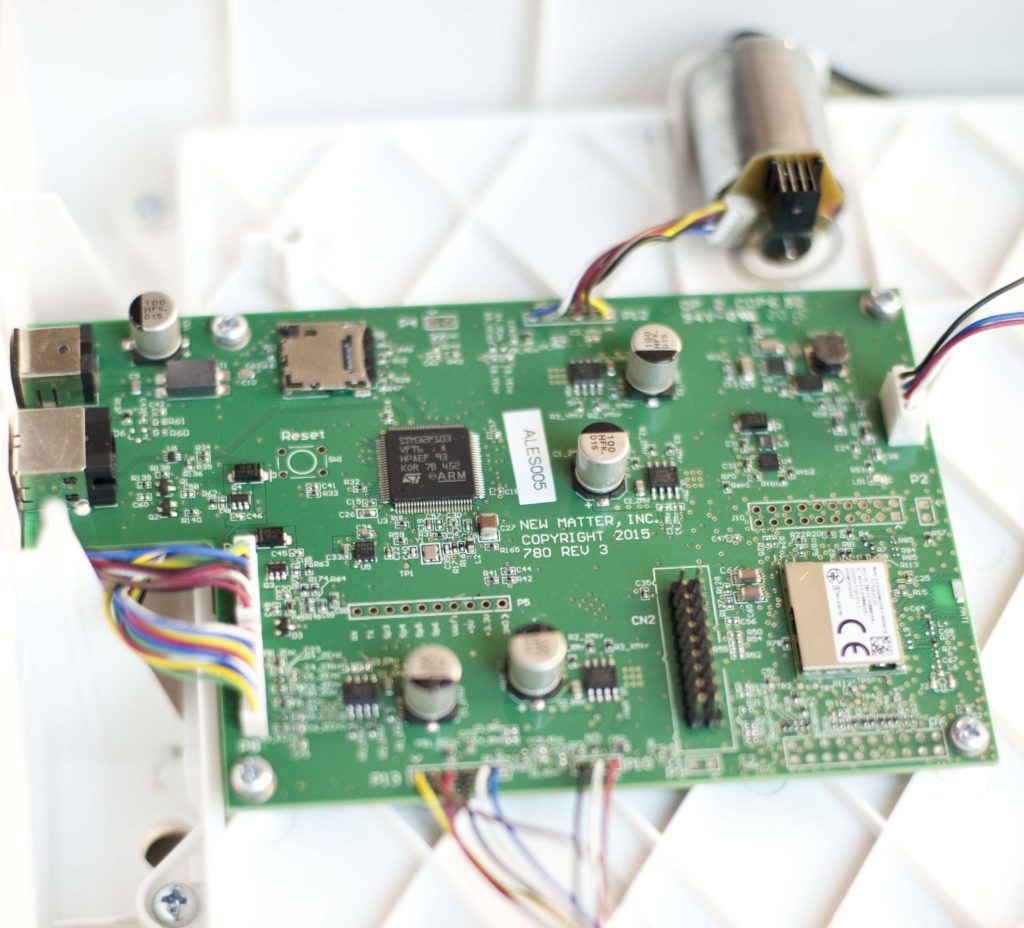The Motion Control market will be worth $22.8 Billion and grow at a Compound Annual Growth Rate (CAGR) of 5.3% by 2022. What drives this growth? Companies that started automating their manufacturing processes are now moving towards adding IoT functionality to create “smart” factory floors as part of the Industry 4.0 concept. Other factors include increases in embedded safety functionality which aid in the Collaborative Robot (COBOT) boom over the last 5 years. Humans working in close quarters with safety-compliant robotic systems add to the smart factory movement we are now seeing. As motion control trends evolve, Simplexity is paying attention to the need for custom, high-precision embedded motion systems tailored to fit a client’s product development application.
Motion Control Trends and the IoT effect
We are in the midst of the Industry 4.0 takeover, where factories feature machines equipped with sensors that generate a multitude of data points. These data are transferred through multi-directional communication to a system that controls the entire production line and makes autonomous decisions. We are seeing our clients move away from the Industry 3.0 mindset, where the hierarchy was mostly uni-directional, without gathering the data points needed to detect and even prevent poor performance or fault conditions.
When to retrofit and when to replace
In today’s world of increasing efficiency, pushing your motion systems and complimentary equipment to the edge of their performance is not only necessary, it is standard. Aging machinery is becoming more and more of a reality as we continue to move through the Industry 4.0 era. Think of your car. As long as you maintain the engine properly, it will last well beyond your expectations. However, other components such as the tires, brakes, and transmission begin to wear down due to everyday usage. Obsolete parts for older cars become harder and harder to find as they age and the same is true with older machinery. It costs more to maintain legacy machines and it is harder to find qualified maintenance personnel to work on them. Thus, companies who do not invest in their factories will face growing challenges to maintain throughput, let alone increase it.
To keep up with Industry 4.0 standards, companies face a constant choice between retrofitting their existing machinery and replacing aging equipment. It’s critical to weigh the pros and cons of each. A primary benefit of retrofitting is that it will likely require less capital investment than buying new. Furthermore, there may be opportunities for cost reduction and simplification during the retrofit process. Among the biggest disadvantages are that the equipment may not lend itself to automation or the addition of sensors. Additionally, documentation such as 3D CAD and 2D drawings of custom components may no longer be available and may need to be redone for modifications to be made.
On the flip side, installing a new motion control system to fit the same function may be the best route. Advantages may include fewer man-hours to operate your machine, added safety functionality, and adding sensors for predictive or preventative maintenance. Purchasing new equipment may also enable the company to meet its long-term needs, such as faster product throughput. The biggest drawback is that purchasing state-of-the-art equipment will require a significant financial investment. Simplexity has experience with both scenarios, and often develops the pros and cons list to determine the best choice for our clients.
Simplexity Expertise
Designing either new or retrofit systems to fit a client’s specific needs is right in our sweet spot. We stay on top of motion control trends and have helped our current clients make the transition between industry 3.0 and 4.0 by providing equipment optimization, cost reduction, and streamlining their production processes. In addition to engineering design, our New Product Introduction team helps get a solid manufacturing plan in place. We are dedicated to our client’s full product lifecycle including determining critical performance metrics and analyzing production process metrics such as Cp and Cpk data.
We help our clients manage product cost, reduce time to market, and product quality by assessing their current motion control and complementary systems throughout the product development process. This may include adding IoT functionality to their current motion control system or product or helping retrofit or design a new motion control system that increases their manufacturing performance. We look forward to discussing your motion control needs and helping transition you into the Industry 4.0 era!



